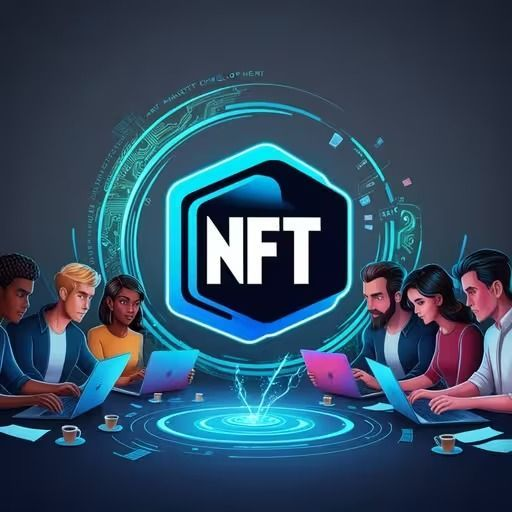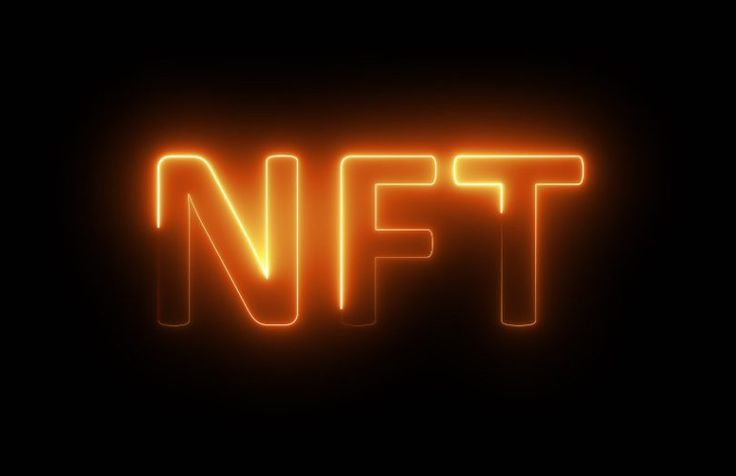What Happened to the NFT Market of Crypto?

The Digital Dream That Is Now Quiet
Remember when everyone was selling various animated images for cool money? Good times for real. It was the era when pixelated punks and digital images somehow became symbols of wealth and revolution. A time when a badly drawn rock could fetch more money than a luxury car. Funny how I even had some then, the rush of clicking “mint,” participating in giveaways and believing I was buying into the future. It was energetic, chaotic, exciting, and almost emotional, the gospel of blockchain evangelists preaching ownership, freedom, and the death of traditional art markets.
But looking around now, it seems the whole buzz has died down. The same timelines that once screamed “WAGMI!” (We’re All Gonna Make It) are now quiet. The Discord servers are ghost towns. The crypto hype men have gone missing, probably rebranding as AI influencers or Web3 consultants. The million-dollar question remains: where did it all go?
Did the NFT market die a sudden death, or did it just quietly evolve while everyone else lost interest? For many, it feels like waking up from a digital dream with a hangover, that dizzy mix of disbelief and regret. People thought they were buying the future but ended up holding overpriced JPEGs that nobody wanted to download for free anymore.
The Boom and Decline – When Pixels Became Gold and Now?
To understand the NFT mania, you have to revisit the golden window between 2020 and 2022, when NFTs were the hottest acronym on the planet. NFT, short for non-fungible token, simply means a digital certificate of ownership secured on the blockchain. In theory, it allowed artists, musicians, and creators to sell unique digital works directly to buyers without middlemen. In practice, it became a playground for speculation, hype, and human greed.
Then came the legends. Beeple, the digital artist who sold an NFT artwork for a jaw-dropping $69 million at Christie’s in 2021, setting the internet on fire. The Bored Ape Yacht Club turned cartoon monkeys into luxury assets, and suddenly everyone, from celebrities like Eminem and Paris Hilton to tech moguls, wanted one. Twitter avatars changed overnight, and owning an NFT became a status symbol, a badge of digital belonging. “Flex culture meets crypto,” someone joked, and they weren’t wrong.

It was the wild west of digital ownership. Art, identity, exclusivity, and clout, all packaged into blockchain bragging rights. Everyone wanted in. Every artist wanted to mint. Every influencer wanted to flip. Every tech bro wanted to evangelize.
But like all bubbles inflated by adrenaline and hashtags, it didn’t take long before reality crashed the party. By mid-2023, according to DappRadar, NFT trading volume with traders plummeted by over 90% from its 2022 peak. Collections that once sold for hundreds of thousands were now worth less than the gas fees needed to sell them. The once-buzzing OpenSea marketplace started looking like an abandoned online bazaar.
The reasons? A perfect cocktail of greed, fatigue, and far too many scams. There were rug pulls, projects hyped to the heavens only for developers to vanish with millions. Celebrities endorsed collections that later flopped. The average buyer realized their “unique” NFT could be right-clicked, saved, and shared endlessly. The dream of ownership turned out to be more symbolic than practical.
The irony? Many who laughed at “traditional art snobs” suddenly realized the snobs might have had a point. Maybe people finally saw through the illusion that not every pixelated penguin was destined to be the next Mona Lisa. As the days rolled by— “did everyone realize they were just staring at overpriced PNG files?” — this definitely had a sting of truth.
What really killed NFTs wasn’t technology. It was human behavior: the herd mentality, the FOMO, and the need to belong. The speculative greed that turned art into numbers and meaning into memes. NFTs didn’t fail because they couldn’t work. They failed because people didn’t want to build; they wanted to flip.
The Shift – NFTs Aren’t Dead, Just Evolving
Here’s the twist: NFTs aren’t gone, they’ve just gone quiet.
While the headlines have moved on, the underlying technology is finding its real footing beyond the hype. NFTs are being quietly integrated into gaming ecosystems (like Immutable X and Polygon), used for digital identity, ticketing, music royalties, and art authentication. Brands are exploring tokenized experiences, musicians are using NFTs to sell exclusive tracks, and museums are adopting them to preserve provenance in digital art.
It turns out the NFT was never the villain, just misunderstood.
“It’s not that NFTs failed, it’s that people misunderstood what they were for.”
NFTs were never meant to be casino chips. They were meant to be certificates of authenticity, proof of ownership, and tools for creative freedom. But greed dressed it up as a get-rich-quick scheme, and when the hype faded, the substance remained buried beneath memes. The NFT saga mirrors something much deeper about human psychology, our endless obsession with belonging, validation, and shortcuts to success. People didn’t just want art; they wanted status. They wanted to own what others couldn’t have. Scarcity was mistaken for value.
And that’s where the story takes a cultural twist.
NFTs became a reflection of our social media reality, where likes and follows have become currency, and visibility equals worth. The psychology behind NFTs wasn’t about technology; it was about identity. Owning a “rare” NFT was like shouting, “I matter here. I belong.”
But belonging built on speculation doesn’t last.
Maybe NFTs didn’t crash, maybe our illusion of quick wealth did.
We’ve seen this movie before. From the dot-com bubble of the early 2000s to crypto’s wild rollercoaster, to the AI gold rush of today, every new technology starts as liberation, becomes obsession, then ends in a correction. Society romanticizes innovation until it disappoints us, then blames it for our own impatience. The lesson is brutally simple: humans don’t crave technology, they crave hope. And NFTs were just the latest vessel of that collective dream.
Still, it’s hard not to laugh at the irony. We wanted to “own” the internet, but the internet owned us instead. People were literally buying cartoon apes for high prices, hoping to become the next digital mogul. Some did, for a moment. Others, well, they’re probably using their Ape as a phone wallpaper now. Yet even in the wreckage, there’s beauty. Every tech revolution goes through its clown phase before maturing. NFTs are shedding their speculative skin and moving toward meaning, powering creator economies, redefining ownership, and maybe, just maybe, teaching us humility.
From Hype to Humility – The Digital Mirror
The story of NFTs isn’t a failure, it’s a reflection. A reflection of how we dream, chase, and stumble in our endless dance with technology.
NFTs weren’t about art or blockchain. They were about us. About our hunger for validation, our impatience for reward, and our romantic belief that technology can save us from the dullness of reality.But maybe that’s what makes it beautiful. Because beneath the scams and screenshots, NFTs remind us of something painfully human, our desire to create meaning out of pixels. To turn digital chaos into something that feels like legacy.

The NFT market didn’t disappear. It evolved. It logged off to remind us that value isn’t created by hype but by purpose. That art, no matter how digital, still thrives on emotion, connection, and story, not price tags. So, maybe the next time you see an NFT headline or hear someone mock the “JPEG millionaires,” remember this: every generation has its bubble, every dream its reckoning.
The real question isn’t what happened to NFTs, it’s what happens to us every time we chase shortcuts to meaning. Because in the end, we don’t just buy tokens or trends. We buy stories, of belonging, of ambition, of wanting to matter. Maybe that’s what NFTs always were. Not a market. Not a scam. Just another mirror, reflecting how fragile and fascinating our digital humanity truly is.
“Maybe the NFT market didn’t disappear — it just logged off to remind us that value isn’t created by hype, but by meaning.”
You may also like...
Tetsuya Yamagami Pleads Guilty to the Assassination of Japan’s Longest-Serving Prime Minister, Shinz

The assassination of Japan's longest serving Prime Minister, Shinzo Abe remains one of the most shocking successful assa...
The Returnee Wave: How a New Generation Is Rewriting the Story of Migration

Everyone knows the story of leaving But what about the story of coming back? Across African cities, a quiet shift is unf...
Niger Delta's Endless Flare is Africa's Methane Crisis

Methane gas changes the atmosphere of the Niger Delta in Nigeria.
Return of the Misfits: The Diaspora's Best Designers Now Build Their Studios in Accra

Studios, galleries, and cultural hubs are now springing up all over the streets of Accra, founded by Ghanaian creatives ...
From Lagos to London: How African Churches Are Building a Global Faith Empire

From Lagos to London, African Pentecostal churches are building vast transnational networks of faith, money, and influen...
How Africa’s Diaspora Is Powering the Continent’s Future

Discover how Africa’s diaspora is transforming the continent from brain drain to brain gain through innovation, investme...
Hidden Tax: Remittance Fees Steal the Generosity of the Diaspora

Remittances have become Nigeria's most reliable source of foreign exchange, dwarfing FDI and oil revenue combined
Between Two Flags: Dual Citizenship and the Politics of Loyalty

Across Africa, dual citizenship is redefining what it means to belong. As laws evolve and diasporas expand, millions now...





